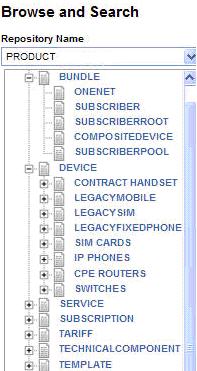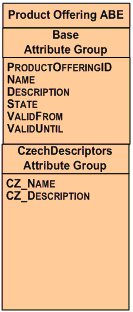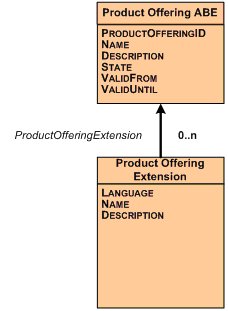SID Patterns for Complex Entities and Extensibility
Conceptually, Fulfillment Catalog utilizes the SID Pattern of Atomic/Composite Entities to model grouping and containment of complex entities, and fully supports the extensible data modeling concept expressed in SID:
Atomic/Composite Entities within Fulfillment Catalog:
The Fulfillment Catalog Data Model supports the SID concept of Composite/Atomic Data Models. This allows for Fulfillment Catalog to Model complex Product Offerings that may be bundles of other Product Offerings).
In Fulfillment Catalog, each repository can contain both Atomic Entities and Composite Entities. For Composite Entities, the TIBCO MDM relationship of "…CompositeComprisedOf is used to link Composite Entities with their Atomic constituents:
Extending Existing Entities within the Fulfillment Catalog Data Model
Fulfillment Catalog's Business Entities can be extended by either:
For Fulfillment Catalog, new Attribute Groups within an existing Data Repository can be treated as "logically" separate objects, with their own security, access control, read/write, and integration.
Because of this either method of extending the Fulfillment Catalog Data Model is valid from a SID perspective:




